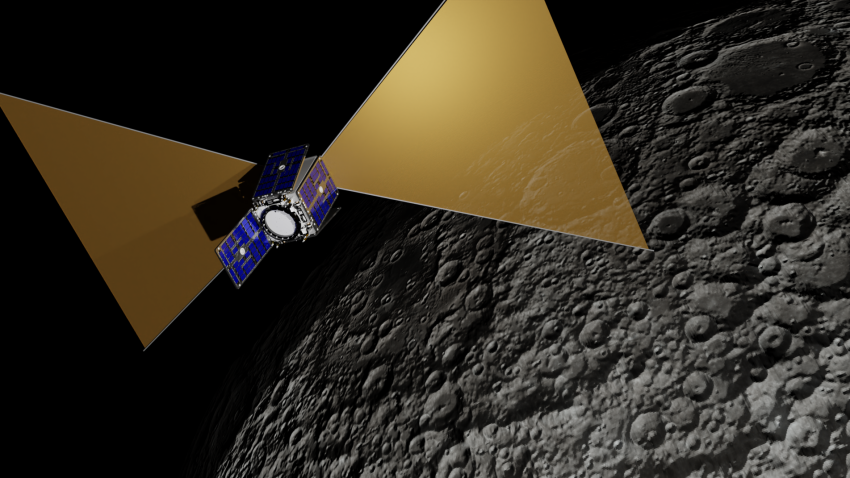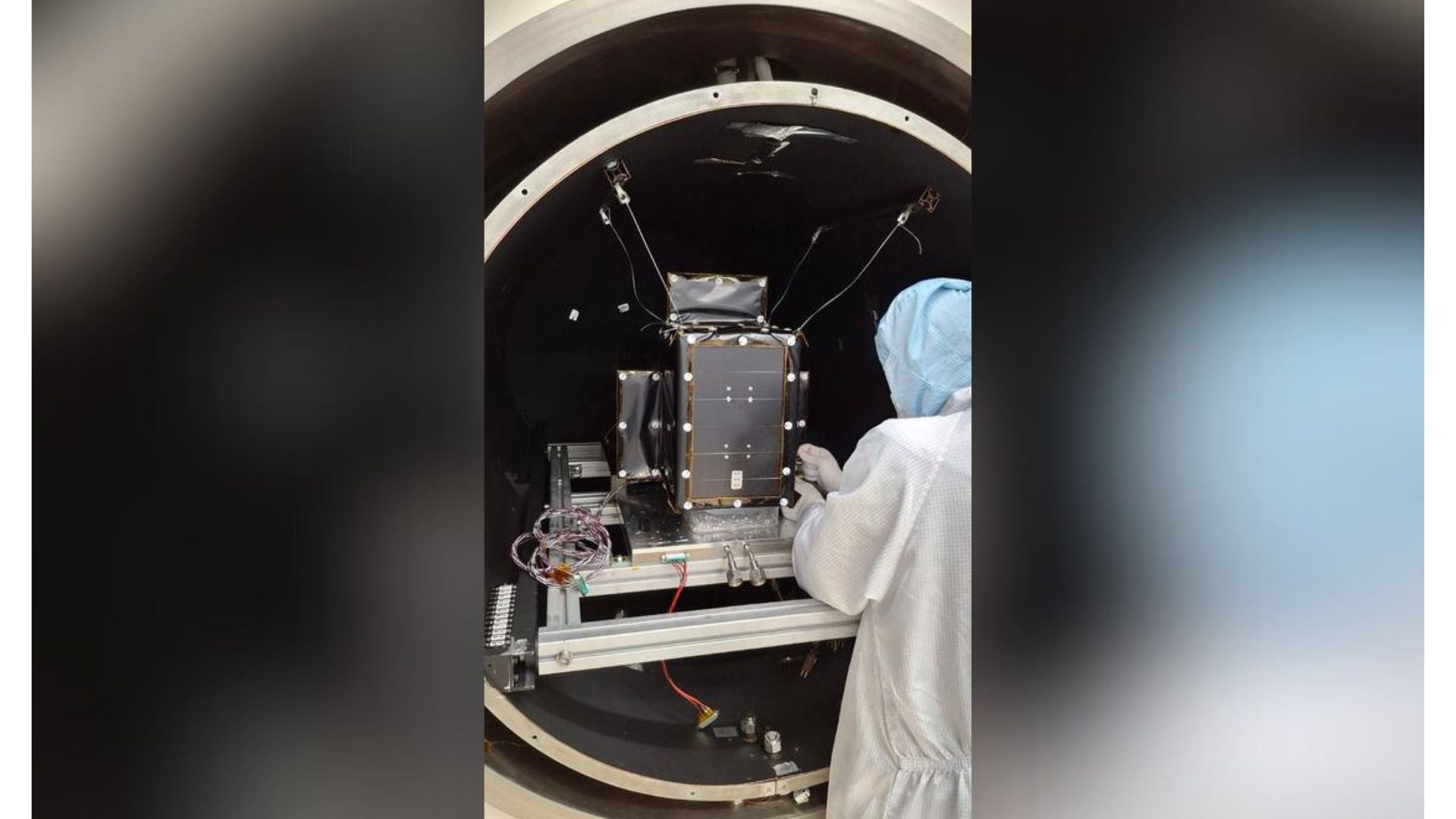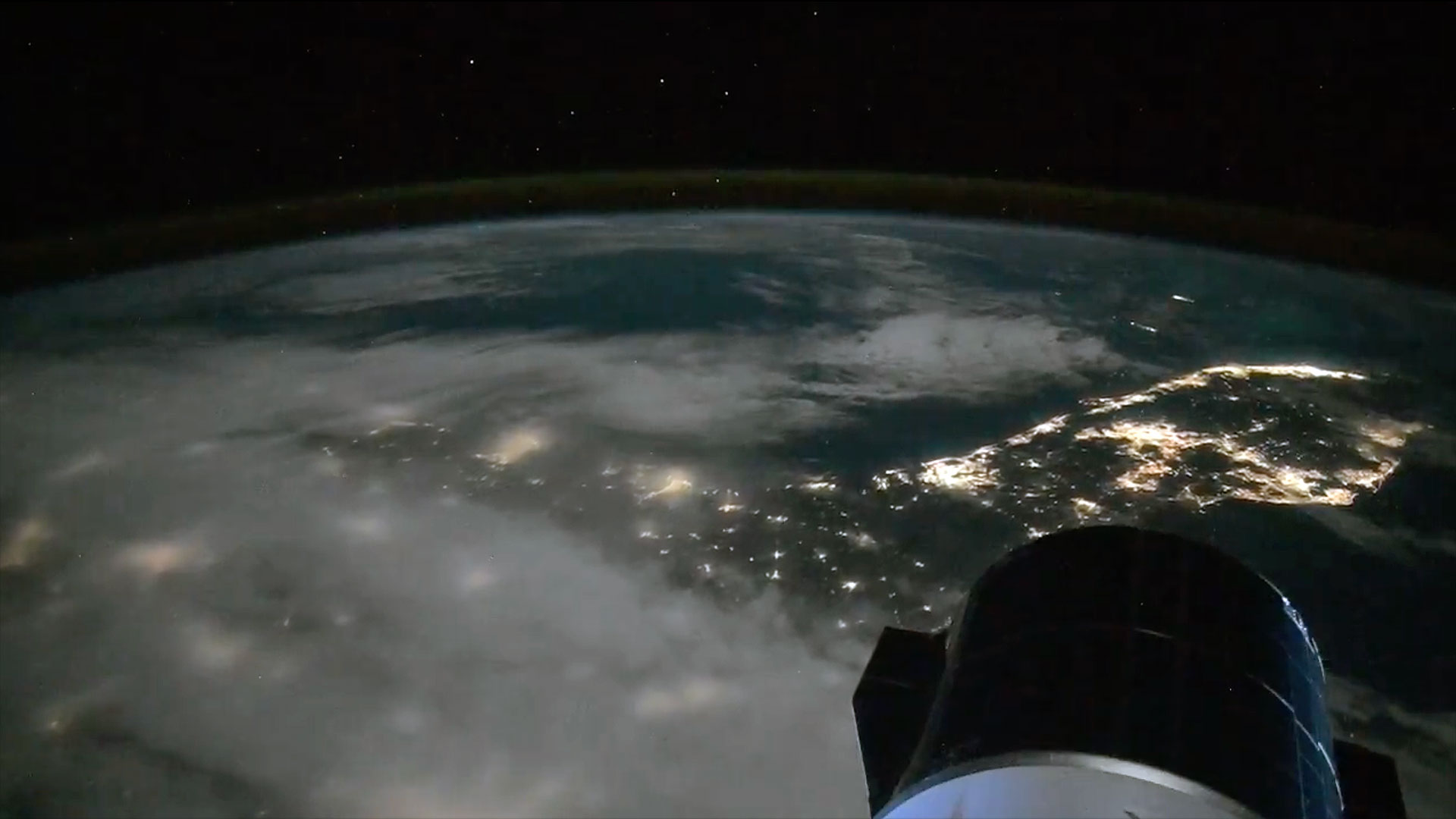This new 'CosmoCube' moon orbiter could eavesdrop on whispers from the early universe
"It's like trying to hear that whisper while a loud concert is playing next door."

A U.K.-led team of scientists is developing a miniature spacecraft that will orbit the moon in an effort to detect faint radio signals from the universe's infancy.
The proposed mission, called CosmoCube, aims to "listen" for these ancient signals from the far side of the moon. It will target the "cosmic dark ages" — a critical-but-mysterious era roughly 50 million to 1 billion years after the Big Bang, when the first stars, galaxies and black holes in the universe formed.
"It's incredible how far these radio waves have travelled, now arriving with news of the universe's history," David Bacon, a cosmologist at the University of Portsmouth in the U.K. who's involved with the mission, said in a statement. "The next step is to go to the quieter side of the moon to hear that news."
Observing this distant epoch is notoriously difficult, astronomers say. At that time, the universe was filled with a dense fog of neutral hydrogen gas that blocked visible light from traveling freely through space, rendering the early cosmos opaque.
However, hydrogen, which is the most abundant element in the universe, emits a characteristic radio signal at a frequency of 1,420 megahertz, corresponding to a wavelength of about 8.3 inches (21 centimeters). As the first luminous objects ignited, they subtly transformed the hydrogen around them, altering the strength and profile of this signal. Capturing these variations could offer a pristine view into how the first luminous objects formed, according to the statement.
While this signal has been studied extensively in the nearby universe, detecting its much fainter counterpart from the universe's earliest days is far more challenging. Capturing these ancient signals requires near-total radio silence, which is virtually impossible to achieve on Earth, where electronic devices and atmospheric interference create a constant background hum.
"It's like trying to hear that whisper while a loud concert is playing next door," Eloy de Lera Acedo, an associate professor of radio cosmology at the University of Cambridge who's involved with the CosmoCube mission, said in the statement. "This makes it really hard to pick up those faint signals from billions of years ago."
Breaking space news, the latest updates on rocket launches, skywatching events and more!
The CosmoCube mission would take advantage of the moon's far side, which acts as a natural shield from Earth's radio emissions, according to the statement. From this unique vantage point, the probe aims to deploy a sensitive radiometer designed to detect low-frequency radio signals.

The mission data could also help to resolve the Hubble tension, the long-standing puzzle in cosmology involving conflicting measurements of the universe's expansion rate based on observations of the early universe versus the local universe.
Lab prototypes of the instruments are already undergoing environmental testing. The team plans to launch CosmoCube within the next four to five years, with the goal of reaching lunar orbit by the end of the decade, the team said in the statement.

Sharmila Kuthunur is an independent space journalist based in Bengaluru, India. Her work has also appeared in Scientific American, Science, Astronomy and Live Science, among other publications. She holds a master's degree in journalism from Northeastern University in Boston.
You must confirm your public display name before commenting
Please logout and then login again, you will then be prompted to enter your display name.
